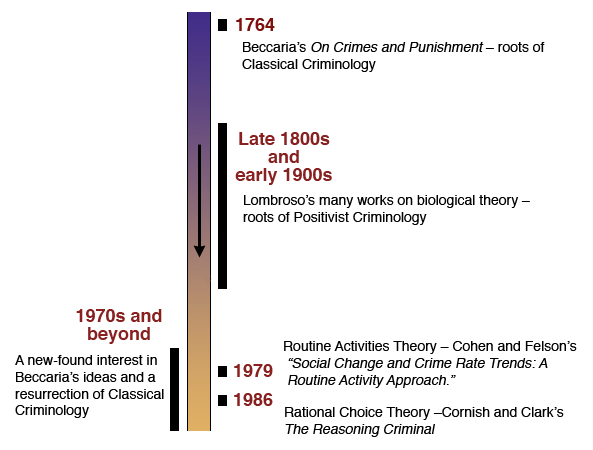Main Content
Lesson 2: Measurement of Crime and Crime Decline
A Historical Perspective of Theories in Crime and Delinquency
To the historical timeline of criminological thought you will now see where the two modern-day deterrence theories fit within the larger perspective. As theorists departed, although not entirely, from the earlier notions of Classical Criminology and embraced Lombroso's work with biological theory, free will and other ideas associated with deterrence theory were put on the back burner for a period of time. When it appeared, however, that efforts at rehabilitation under positivism had failed to deter crime, there was a great deal of renewed interest in the ideas of Beccaria. Thus, two modern-day theories of crime that are grounded in major concepts from the Classical perspective found their way into the criminal justice policy arena. Once again, society began to think about deterring crime through swift and certain punishment, making sure that criminals knew that crime absolutely would not pay, and implementing a series of tough consequences for repeat offenders (e.g. "three strikes and you are out" legislation, mandatory minimum sentences, and expansion of capital offenses, etc.). These ideas and policy approaches are still very much alive and well today in the 21st century.

Figure 2.1: The Evolution of Ideas about Crime and Punishment
